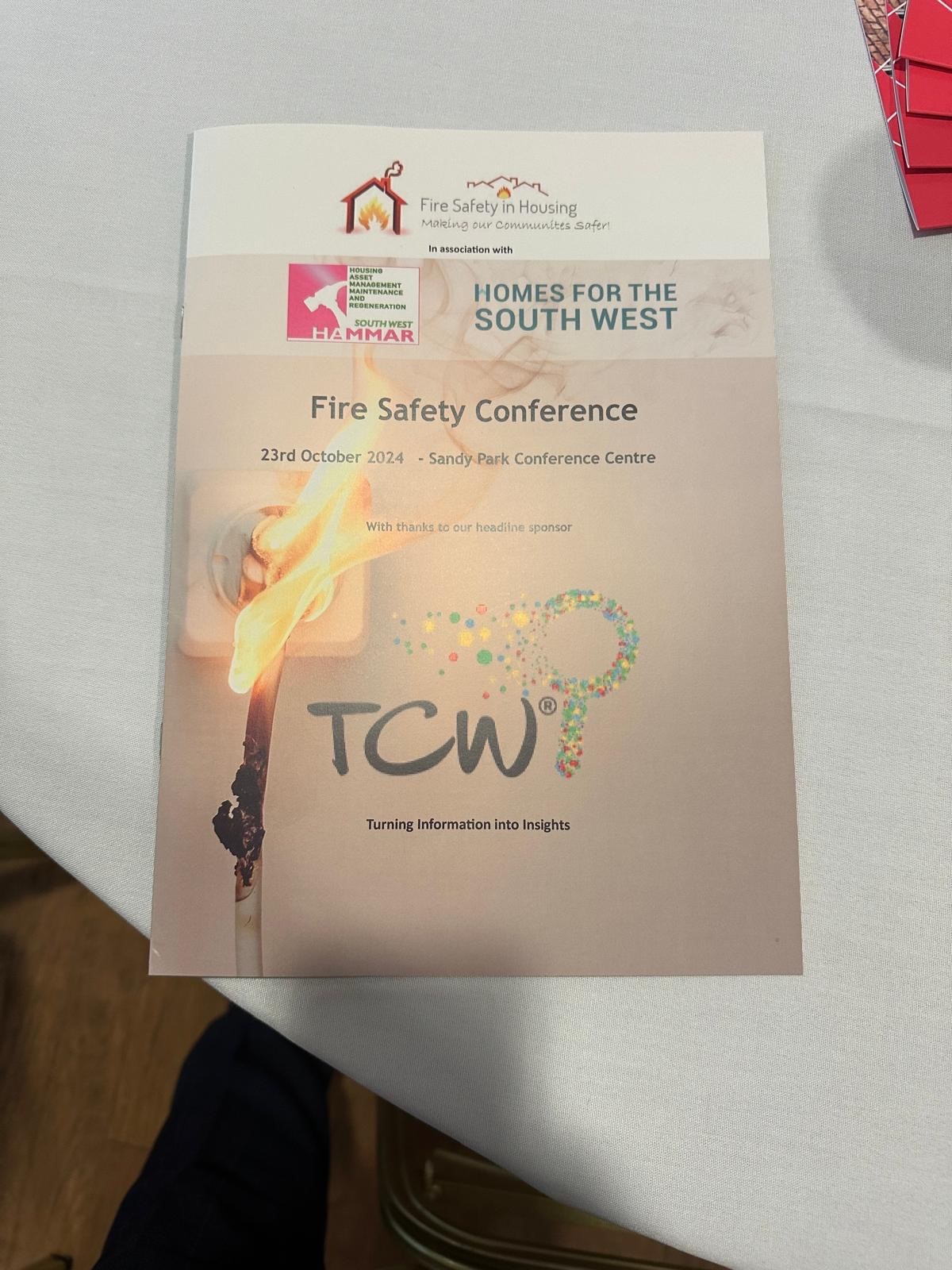
Reece Rowden
Principal Consultant
19 November 2024
Enhancing Fire Safety Compliance and Risk Management
Fire safety and compliance are critical concerns in building management, affecting a range of stakeholders, from enforcement agencies and building owners to residents and specialist consultants.
Fire safety and compliance are critical concerns in building management, affecting a range of stakeholders, from enforcement agencies and building owners to residents and specialist consultants.
Back in September, I spent some time attending the NHMF event in Exeter which explored key insights into the laws, duties, and best practices related to fire safety. It was also a great platform to discuss the emerging challenges within the sector, particularly in modern construction methods.
With fire safety being such a prominent topic in our industry, I wanted to share my key takeaways from this eye-opening event.
Fire Safety Law and Compliance
The Fire Safety Order (FSO) serves as the cornerstone of fire safety law in the UK.
It requires building owners and managers to manage fire risks effectively and encompasses various offences that put individuals at risk. These offences fall under criminal law, with enforcement guided by the Police and Criminal Evidence Act (PACE).
This makes them a serious legal area where individuals can be cautioned for non-compliance. We spoke about how most offences are triable either way, meaning cases can be heard by a Magistrate or referred to the Crown Court for sentencing. It’s clear to see that the FSO is not taken lightly.
The FSO's main thrust is self-compliance—duty holders are expected to procure a suitable Fire Risk Assessment (FRA) and implement preventive measures according to the principles outlined in the Regulatory Reform (Fire Safety) Order (RRSFO).
The principle of "As Low As Reasonably Practicable" applies, aiming to reduce fire risk to an acceptable and reasonable level.
In practice, enforcement includes issuing notices, and failure to comply with these notices can be a criminal offence. Prohibition notices are seen as a last resort, and temporary measures are often recommended to avoid such drastic actions. It was agreed that the ultimate goal is to achieve compliance without resorting to punitive measures unless absolutely necessary.

Challenges in Fire Safety Enforcement
Enforcement can be lengthy, often involving negotiations with building managers to establish action plans, which can extend over several years! The emphasis is on a staged approach with achievable goals, balancing compliance with practicality.
There is also a growing concern that temporary safety measures, initially implemented to address immediate risks, often become permanent, undermining long-term safety.
I know it can be hard to implement and be fully compliant, but during the event, we shared stories of how these short-term ‘fixes’ have resulted in disaster. It was harrowing and emphasised the need to take action.
Fire Safety and Asbestos Risks
iON Consultants highlighted the critical relationship between fire safety and asbestos.
Asbestos, responsible for over 5,000 deaths per year in the UK, remains a major concern. Many buildings constructed before 2000 still contain asbestos, posing significant risks during fire incidents. Proper Asbestos Management Plans are crucial to ensuring that fire safety measures do not inadvertently disturb asbestos-containing materials.
During the seminar, a recent case study was shared with us. The example revealed shocking failures in procurement, planning, and communication. A principal contractor continued work despite inaccurate pre-construction information, resulting in several missteps, from poor asbestos surveys to inadequate training.
The case highlights the need for clear procedures, appropriate emergency measures, and continuous training to ensure safety.
Engaging Residents and Ensuring Compliance
Resident engagement is essential to effective fire safety.
The Landlord and Tenant Act, alongside the Building Safety Act, mandates collaboration between building owners and tenants. The seminar speakers shared that clear communication and education can make a significant difference, as residents often overlook the importance of fire safety measures when no immediate benefits are visible.
For instance, while kitchen and bathroom upgrades are appreciated, fire safety upgrades often go unnoticed, even though they are vital for long-term safety.
Accessing properties for safety inspections can also be challenging. In his in-depth seminar, Matthew Steggles shared that a significant proportion of tenants require multiple visits for access. This calls for a more strategic communication approach that emphasises the importance of fire safety without causing undue alarm.

Regulatory Reform and Industry Collaboration
I have seen that the push for regulatory reform is ongoing, with pressure from both political parties to accelerate remedial works and weed out bad actors in the industry.
There is a consensus that deregulation cannot be a quick fix, and efforts to improve fire safety must involve collaboration across all levels—from government bodies to building owners and from fire safety experts to residents.
We should start learning from international practices, such as those in Japan and the USA, where voluntary compliance and a proactive safety culture are more common.
Could this be the way forward for the UK?
Conclusion
Fire safety is a big job that needs clear rules, good enforcement, and everyone doing their part. It’s about handling old risks like asbestos and keeping up with new building challenges.
Safer buildings come from working together, sharing information, and regular training. Everyone should focus on safety, manage risks, and follow the rules, both by themselves and with proper checks.
By staying up to date, being careful, and using laws and best practices sensibly, the UK can continue to improve fire safety and protect people and property.